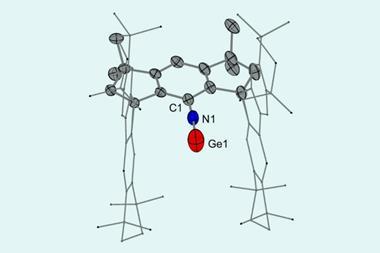Scientists probe synthetic proteins to identify key toxic species responsible for Alzheimer's plaques
US and UK researchers have used a new technique to identify what they think could be the primary toxic species in the development of Alzheimer’s disease - a twelve-subunit form of the protein amyloid-beta 42 (Aβ42). Their approach may also be instrumental in understanding the mechanisms of other amyloid diseases, such as Parkinson’s and type 2 diabetes.
Various diseases have been linked to the aggregation of amyloid proteins. In the case of Alzheimer’s, there is a growing body of evidence to support Aβ42 as the agent of disease. But this protein exists in many different forms and until now, it has been difficult to establish which is responsible for the formation of the large, fibrillar plaques that are seen in the brains of Alzheimer’s patients.
The new technique - a combination of mass spectrometry and ion mobility approaches - is able to measure the shape and relative abundance of different synthetic protein isoforms1. ’We see that in [the less toxic] Aβ40 only dimers and tetramers are formed and we can separate those two out by their shape - by looking at how long they take to drift through a cell filled with an inert gas,’ explains lead researcher Michael Bowers of the University of California, Santa Barbara. ’But Aβ42 goes on to form hexamers and, importantly, those hexamers combine to form dodecamers.’
Intriguingly, the mass of the dodecamer exactly matches that of a protein previously shown to cause memory defects in mice2. As the larger oligomers are only formed by Aβ42, the team propose a model for fibril formation in which Aβ42 is the main protagonist. Their findings also point towards clinical interventions designed to arrest oligimerisation before formation of the dodecamer.
’While the information is decidedly low resolution, this method does reveal new facets of the Aβ early assembly process. There is significant potential to identify and characterise oligomeric states of Aβ that are important for further assembly or neurotoxicity,’ says John Maggio, an Alzheimer’s expert at the University of Cincinnati. He agrees that characterisation of key molecular assemblies in the disease could allow for development of more direct interventions.
David Allsop, a member of the Alzheimer’s Society’s Research Advisory Committee in the UK, says Bowers’ technique looks like a good way to study Aβ42’s different forms. But, he points out, since there is no toxicity data, it still isn’t clear that the dodecamer should be the primary target for interventions.
Bowers is now using the technique to develop a more generalised model for protein aggregation in amyloid diseases. ’We’re looking at the overall mechanism of these amyloid formations. It starts with a monomer, then a dimer, and then grows to something called a beta-sheet fibril. So somewhere along the line there’s a phase transition.’






No comments yet